Anne Speckhard & Sophia AbiNajm Download PDF Introduction Targeted violence and violent extremism are on…

Caliphate AI-: IS/ISKP Supporters Harness Generative AI for Propaganda Dissemination
Mona Thakkar & Anne Speckhard
Militant groups such as the Islamic State (IS) and its supporter communities are increasingly capitalizing on advancements in artificial intelligence (AI) to disseminate propaganda and disinformation more efficiently and at reduced costs. By exploiting generative AI through easy to use and accessible Chat bots, as well as image and audio generators, IS supporters are producing visually appealing and persuasive content that aligns with the organization’s values, media outreach, and recruitment aims thereby expanding their propaganda reach. Following the deadly attack on a Moscow concert hall, in March, an IS supporter circulated AI-generated video news bulletins about the group’s global operations within pro-IS communication channels. This sparked extensive discussions and a growing interest among IS supporter networks in integrating AI into their media content creation. This development signified a pivotal shift in the utilization of AI as a key tool in the Islamic State and its regional affiliates’ media warfare strategies, particularly, Islamic State in Khorasan Province (ISKP) based in the Afghanistan-Pakistan region, as it continues to be on a rampage posing a significant international security threat.
In the aftermath of IS Moscow attack, an IS sympathizer on the encrypted communication platform Rocket Chat circulated an AI-generated video news bulletin on the attack as part of an escalating anti-Russian propaganda campaign. In the video, realistic looking AI-generated characters in military fatigues emulating real news broadcasters read news dispatch about the attack in Arabic sourced from official Islamic State mouthpieces like al-Naba and Amaq news agency. With the AI generated humanoid broadcaster speaking and IS logo and news tickers moving along the bottom of the screen interspersed with footage showing IS fighters executing attacks, the broadcasting style closely emulated the popular television networks of Al Jazeera and CNN. Other AI-generated video news broadcasts of IS’s operations in the Middle East and Africa were subsequently produced in a similar style, featuring a character in traditional Islamic outfit as part of what the IS supporter branded as the “News Harvest” program. In these cases, text-to-speech AI to convert written information into speech and audio with a human accent, and video generators were used producing these cutting-edge propaganda videos.
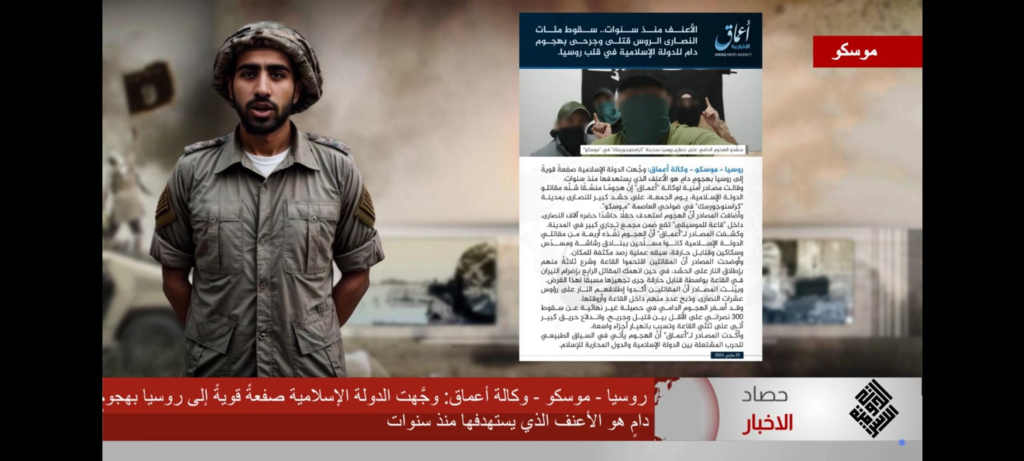
AI- generated news bulletin on IS’s deadly Moscow concert hall attack.
Subsequently, among fervent IS adherents, contentious discussions emerged regarding the theological ramifications of employing AI in their media production under Islamic law. Some contended that the portrayal of animated characters with discernible facial features in videos was haram (sin) in Islam, prompting the producer to obscure the speakers’ visages in subsequent releases. Despite these modifications, other radical supporters urged the creator to eschew using “full-body animated characters” altogether, suggesting that the IS flag would be a more suitable background for future videos. Conversely, others advocated for launching analogous news programs in English and other languages to enhance engagement with Western Muslim audiences. Following this trend, Islamic State in Khorasan Province (ISKP) and its supporter communities have now weaponized generative AI to produce similar interactive AI news reports, albeit with notable differences in visual style and narration, to amplify their propaganda messaging. This study investigates the gradual incorporation of AI into pro-ISKP supporters’ media propaganda through these broadcasts as well as the reactions of other supporters to these developments.
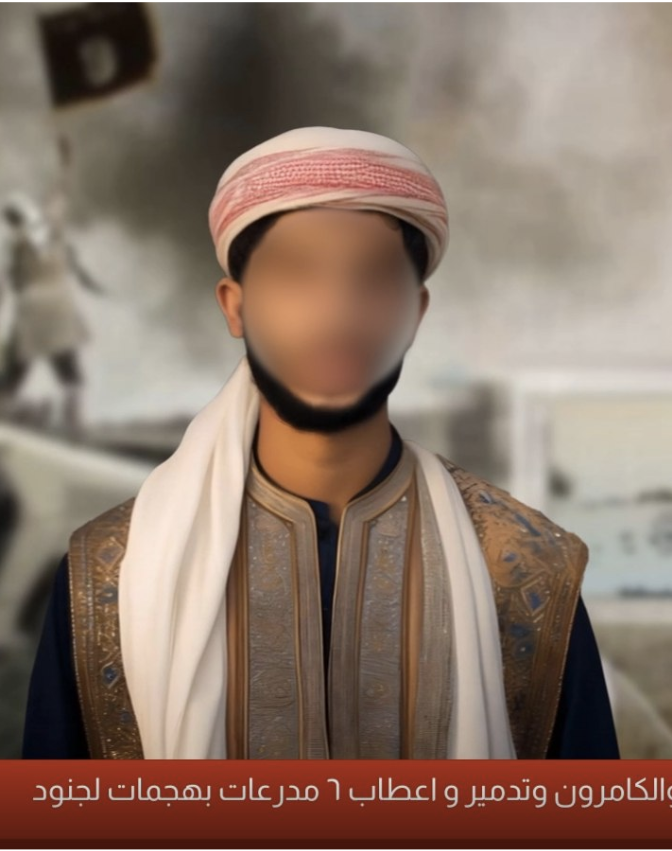
Blurred image of the character appearing in the AI- news broadcast without facial features to comply with requests of some religiously conservative IS’ supporters who object to creating humanoid broadcasters with facial features.

IS supporters argue over the legitimate use of artificial intelligence in Islam discussing how Islamic State’ used AI in its media operations and the Islamic injunction against using voices of ‘disbelievers’ to recite Islamic scriptures.
ISKP, the most internationalized branch of IS, possesses both the operational capability and intent to launch attacks from its base in Afghanistan to neighboring countries and even as far as Europe. ISKP’s media propaganda machinery is equally potent, now directing its vitriolic narratives against major powers such as Russia, China, and the USA across multiple languages and on multiple digital platforms and messaging apps. Unsurprisingly, thus, ISKP and its supporters have been particularly adept and enthusiastic about experimenting with modern technologies like generative AI. On May 17, 2024, following ISKP’s attack on Western tourists in Afghanistan’s Bamiyan province, a pro-ISKP supporter disseminated a brief AI-generated news segment in Pashto under the title of “Khurasan TV” program. The video, first shared on the encrypted app Teleguard, featured an AI-generated male news anchor in formal western attire with an unblurred face reporting in Pashto on ISKP’s Bamiyan attack. Interestingly, there was no scrutiny or criticism from other ISKP supporters regarding the perceived theological incoherence of using full body animated characters with visible facial features in this video and other related religious transgressions. This contrasted sharply with efforts of the aforementioned IS supporter who faced criticism for not strictly adhering to the Islamic law when depicting human forms in media. The ISKP supporter under his brand of “Khurasan TV program” proceeded to produce more than nine such AI-generated news broadcasts between May and June 2024, with requests for making similar news broadcasts in Urdu and Persian.

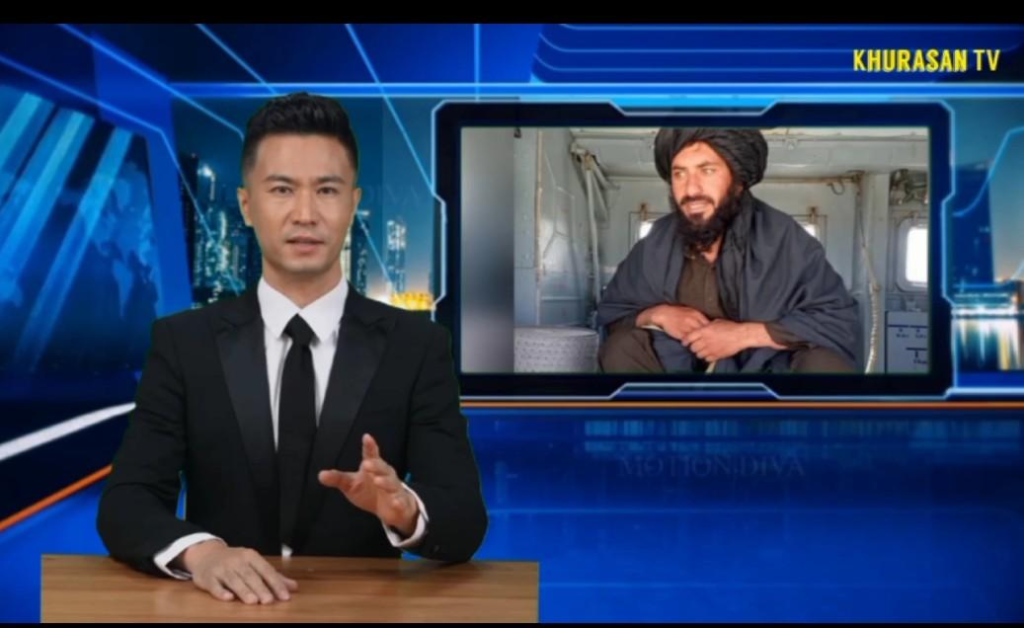
AI-generated news bulletins from ‘Khurasan TV,’ featuring simulated human news anchors in formal Western attire.
However, other users providing feedback on these productions highlighted certain discrepancies including the lack of synchronization between the AI-generated news anchors’ speech and hand gestures, along with audio synchronization problems. One supporter asked the creator to avoid using background layouts in the video that resembled those of Pakistani news networks and newspapers. This lack of technical expertise indicated that the pro-ISKP content creator is still in the initial stages of experimenting with the AI generative tools. He responded that these broadcasts are” trial versions” further reflecting his desire to diversify his technical skills by learning new AI software to produce higher-quality content. Within this context, it is also interesting to note that a pro-IS media advocacy group, “Ansar Al Media Foundation,” has also aired an animated propaganda cartoon series in Arabic during Ramadan, targeting children. The series showcased two teenage protagonists, Muawiyah and Salem without facial features, delving into contentious subjects, such as IS’s worldview of deployment of suicide operations on the battlefield as a form of Islamic martyrdom—a view contested by many Islamic scholars. The two teens concluded their interaction by endorsing the extremist ideology of the Islamic State.

ISKP supporters provide feedback to creator on AI-powered news broadcasts.

Pro-IS animated series aimed at children endorses IS’s propagandist claims of endorsing terrorism as supported by Islam.
Beyond aesthetics, the language and communicative style in which these AI made news broadcasts were presented held particular significance for the ISKP supporter. While the pro-IS creator mentioned at the beginning of the article drew material from IS institutional media, most AI-generated broadcasts distinguished themselves with a neutral tone and language in reporting. The ISKP creator meticulously avoided using pejorative language typically employed by the group in its official rhetoric against perceived adversaries. Instead, the scripts of these AI segments closely emulated the lexicon and narrative style of mainstream broadcasting networks, presenting ISKP’s narratives with an unbiased facade. For instance, in the AI report on ISKP’s attack in Bamiyan that killed Afghans and Western tourists, neutral or commonly used terms and acronyms like “Daesh” (used in the Arabic-speaking world for the group) were employed instead of “Soldiers of the Caliphate” or “mujahideen,” the terms IS prefers for its fighters. Derogatory terms such as “Mushrikeen” and “Rafidah” used by IS to refer to the Shia minority Hazaras in Afghanistan were also avoided. Moreover, the term “Crusader Western alliance,” commonly used in IS’s official media discourse, was omitted when referring to the West in these AI broadcasts. All of this seemed aimed at presenting an objective portrayal, despite the selective facts and angles chosen by the ISKP supporter.

An AI-generated news bulletin on ISKP’s Bamiyan attack, ostensibly throughout the video mentions the commonly accepted Arabic term “Daesh” for referring to IS.
In another instance, the user sourced the Pashto-translated script verbatim from an English article in a Western news publication that covered threats of attacks by pro-IS media against U.S. citizens and major sporting events in Europe. In the past three months, after IS’s attack in Russia, Telegram’s crackdown on the IS network had severely impacted the group’s online activities and diminished the reach of their media campaigns. This action led to the shutdown of numerous longstanding accounts, channels, and bots belonging to prominent pro-IS/ISKP media entities, prompting IS to continuously create new accounts to replace those that were removed. In response to the threat of de-platforming, IS supporters are now concentrating on camouflaging their new propaganda videos to resemble impartial news broadcasts through the use of AI. This strategic approach aims to circulate their content widely on Telegram and other platforms while avoiding scrutiny of and account takedowns.
In a pro-ISKP discussion room, one creator outright admitted, “We must focus on the appearance and use unbiased language so that the videos look neutral on [the] surface and do not seem to favor or belong to any specific group. We need to avoid using banned words that draw unwanted attention towards us. This AI program was created by infidels, but we must take full advantage of it.” To this, a fellow IS supporter replied, “These secular people won’t be suspicious and won’t know they are watching news created by Dawlah [the Islamic State].” Notably, the user refrained from widely sharing a news dispatch in Pashto, which featured an AI-generated character in traditional Islamic attire against the backdrop of an IS flag and Nasheeds (hymn). Instead, it was circulated in private channels on Teleguard, avoiding broader distribution in the pro-IS telegram channels or group chats.
Primarily disseminating these AI-generated news reports on ISKP’s operations via encrypted platforms like Telegram and Rocket chat, ISKP adherents contended that this AI-driven content was intended for broader distribution on social media networks such as Twitter and Facebook. They believe these platforms hosting “most socially active communities” offer unparalleled opportunities for disseminating propaganda, appealing to, and mobilizing more supporters, despite the challenges of regular account suspensions and the accompanying content-sharing restrictions. Pro-IS users also suggested creating fake Twitter accounts that mimic the profiles of legitimate users, media outlets, and other religious or political figures to disseminate these AI-generated news videos.

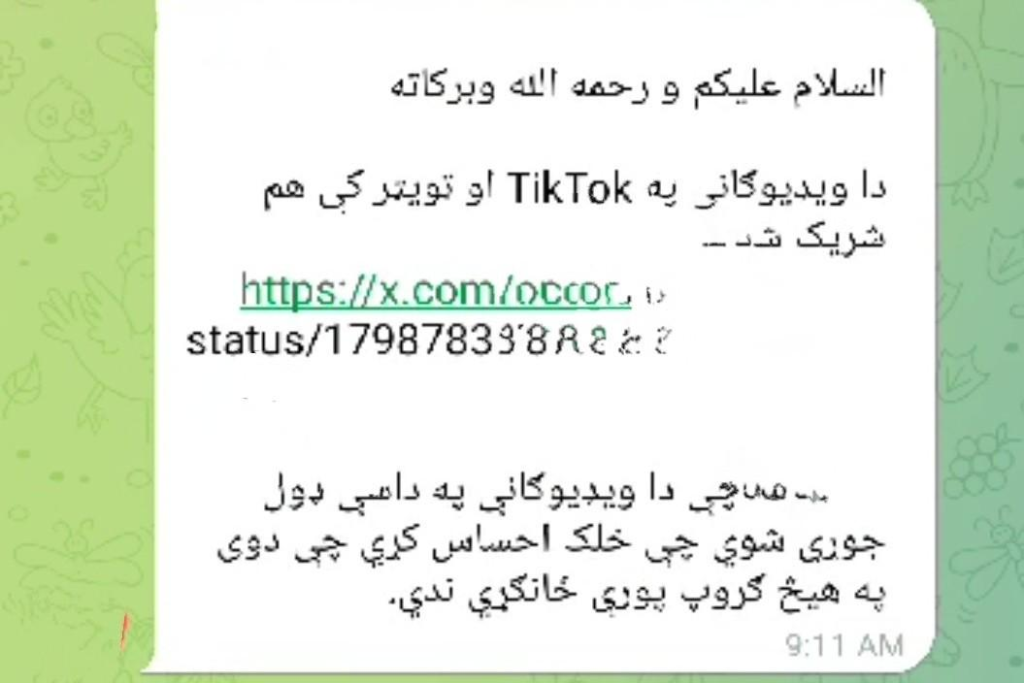
IS supporters highlight the pivotal role of social media platforms in expanding IS’s global reach, employing hoax accounts resembling legitimate users to circumvent scrutiny and bans on social media platforms.
Interestingly, these AI driven news videos were circulated on X through parody or questionable copycat accounts associated with Taliban members and supporters. For instance, a pro-IS Pashto account with over 18,000 followers on X that circulated these videos was in fact fabricated as a hoax profile of the Taliban’s foreign minister, Amir Khan Muttaqi. Pro-IS profiles on X also shared an AI-generated image of Taliban Supreme Leader Hibatullah Akhundzada dressed in a Sikh turban and outfit. This was intended to rebuke the Taliban for its promises of providing security for minorities, including Sikhs in Afghanistan, for whom ISKP have been vulnerable targets.
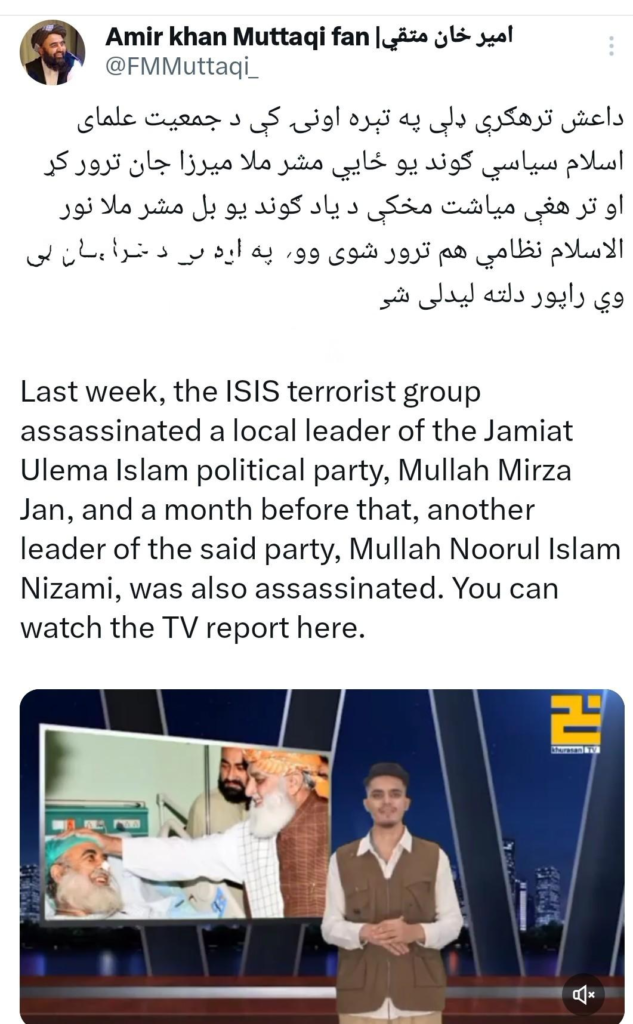

An AI-created news bulletin from Pro-ISKP Khurasan TV was disseminated on Twitter via a fake account impersonating Taliban Foreign Minister Amir Khan Muttaqi.
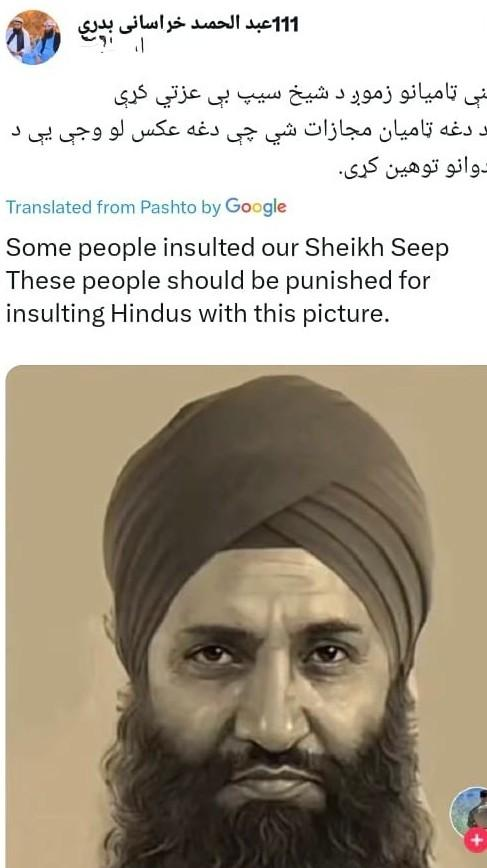
A pro-ISKP supporter, mocking Taliban leader Hibatullah Akhundzada, circulated a manipulated image of him wearing a Sikh turban. The image on X was shared under the fake profile of Tajik Taliban leader Abdul Hamid Al Khorasani.
Besides Twitter, these AI-news clips garnered substantial engagement on TikTok, with one such video amassing over 150 likes and comments predominantly sparking hostile reactions from Taliban sympathizers. Several pro-Taliban accounts swiftly criticized the AI-generated propaganda news clips, disparaging them as crudely edited and branding them as disinformation. They accused ISKP’s “media warriors” of appropriating the identity of a legitimate news network, Khorasan TV International, active in Afghanistan, to propagate extremist propaganda and falsehoods. One user commented, “The video is clearly fake and was made online! Look at the journalist’s mouth—he has no teeth. These extremists will do anything to spread lies.” On the other hand, pro-IS accounts praised the “innovative” style of propaganda broadcasting, noting the advantage of being able to circulate them “online without security concerns.”

Pro-Taliban Tiktok accounts question the authenticity of these AI-powered jihadist news bulletins.
The wide distribution of ISKP’s propaganda under the veneer of neutral-appearing AI-generated news segments via the fabricated “Khurasan TV network” is increasingly pervasive. The trend of pro-IS supporter groups strategically branding their social media accounts and channels as “independent news outlets” — often using Netflix, CNN and Al Jazeera branding in their faux newscasts to exploit platform moderation gaps — is proliferating. This strategy ensures a persistent presence of IS-related content across social media platforms, thereby amplifying visibility and disseminating the group’s ideology on a global scale. ISKP/IS propagandists are also now actively advocating for the utilization of free AI tools such as Vibro, Pika, and Runway in their content creation, sharing pertinent learning guides sourced from YouTube tutorials alongside advising the use of AI translators like Deepl for accurate translations. Additionally, a pro-IS tech foundation had in the past released comprehensive guides on leveraging ChatGPT while emphasizing the importance of safeguarding data privacy during chatbots interactions and also shared guides on basic hacking courses.

Pro-IS users with technical knowledge offer tips on using various AI tools encouraging users to wage jihad through cyberspace.
Propaganda dissemination and disinformation represent critical arenas where the group and its supporters have begun to aggressively exploit AI, developments we must be both aware of and responsive to. We can also expect IS’s use of AI to extend beyond this to hacking operations and expand to development of autonomous weapons like drones and self-propelled bombs. The strategic deployment of generative AI by IS and its supporters to craft sophisticated, professional-looking news broadcasts is pivotal in their broader strategy to amplify communicative messaging and bypass existing takedown operations on mainstream social media platforms. Just as IS flooded social media before, during and throughout the reign of the IS Caliphate in Syria and Iraq we now see ISKP and its supporter networks trying to do the same by using AI to circumvent the takedown operations used against IS .This approach has significantly bolstered their longevity and expanded their outreach across encrypted and social media platforms, effectively attracting and recruiting new followers.
As IS, its regional affiliates and pro-IS media entities refine their use of generative AI, the probability of producing increasingly intricate and compelling propaganda content rises and the challenge for takedown operations increases. The burgeoning trend of militant actors leveraging generative AI, primarily, for media production and dissemination, thus poses a grave concern from a global security perspective, necessitating closer collaboration and increasingly rapid responses among researchers, technology firms, policymakers, and law enforcement agencies to devise robust strategies countering terrorist misuse of generative AI.
About the authors:
Mona Thakkar is a research fellow at the International Centre for the Study of Violent Extremism, where she focuses on monitoring militant jihadist groups and their financial networks. Follow Mona on X: @ t16_mona
Anne Speckhard, Ph.D., is Director of the International Center for the Study of Violent Extremism (ICSVE) and serves as an Adjunct Associate Professor of Psychiatry at Georgetown University School of Medicine. She has interviewed over 700 terrorists, their family members and supporters in various parts of the world including in Western Europe, the Balkans, Central Asia, the Former Soviet Union and the Middle East. In the past three years, she has interviewed ISIS (n=239) defectors, returnees and prisoners as well as al Shabaab cadres (n=16) and their family members (n=25) as well as ideologues (n=2), studying their trajectories into and out of terrorism, their experiences inside ISIS (and al Shabaab), as well as developing the Breaking the ISIS Brand Counter Narrative Project materials from these interviews which includes over 175 short counter narrative videos of terrorists denouncing their groups as un-Islamic, corrupt and brutal which have been used in over 125 Facebook campaigns globally.
She has also been training key stakeholders in law enforcement, intelligence, educators, and other countering violent extremism professionals on the use of counter-narrative messaging materials produced by ICSVE both locally and internationally as well as studying the use of children as violent actors by groups such as ISIS and consulting with governments on issues of repatriation and rehabilitation. In 2007, she was responsible for designing the psychological and Islamic challenge aspects of the Detainee Rehabilitation Program in Iraq to be applied to 20,000 + detainees and 800 juveniles. She is a sought after counterterrorism expert and has consulted to NATO, OSCE, the EU Commission and EU Parliament, European and other foreign governments and to the U.S. Senate & House, Departments of State, Defense, Justice, Homeland Security, Health & Human Services, CIA, and FBI and appeared on CNN, BBC, NPR, Fox News, MSNBC, CTV, and in Time, The New York Times, The Washington Post, London Times and many other publications. She regularly speaks and publishes on the topics of the psychology of radicalization and terrorism and is the author of several books, including Talking to Terrorists, Bride of ISIS, Undercover Jihadi and ISIS Defectors: Inside Stories of the Terrorist Caliphate. Follow Anne Speckhard on X: @AnneSpeckhard
.

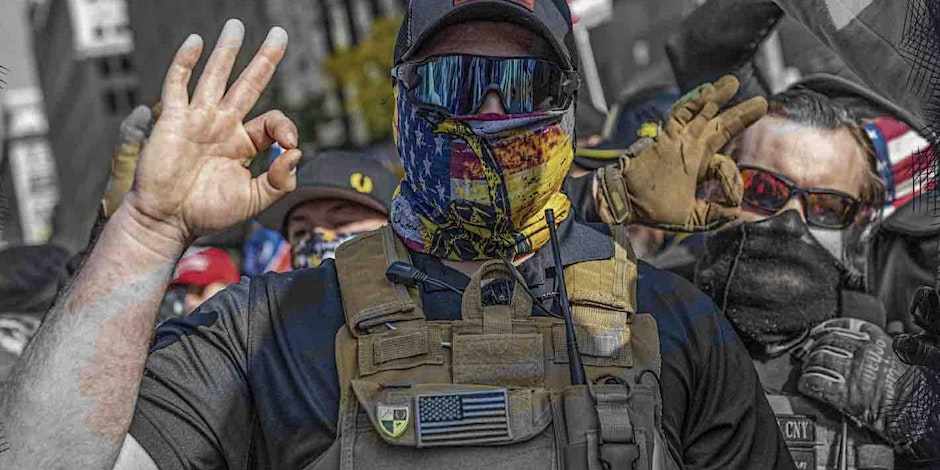


This Post Has 0 Comments